 A light drizzle had started by the time we reached Fung Yeun. While waiting patiently for the rain to stop (anyway, the weather was bad for 3 consecutive days), we were chatting and browsing the books on display(for sale and occasionally I was showing some of the species featured in the books that can be found in Singapore.
A light drizzle had started by the time we reached Fung Yeun. While waiting patiently for the rain to stop (anyway, the weather was bad for 3 consecutive days), we were chatting and browsing the books on display(for sale and occasionally I was showing some of the species featured in the books that can be found in Singapore. As mentioned in my previous post, I went back to Fung Yuen again on 10 Dec. Of course, apart from butterfly species, we are sure to spot many other animals in Fung Yuen. These two wasps were shot while waiting for butterflies to pose for me. John identified this a Scoliid wasp, possibly a male Liacos erythrosoma.
As mentioned in my previous post, I went back to Fung Yuen again on 10 Dec. Of course, apart from butterfly species, we are sure to spot many other animals in Fung Yuen. These two wasps were shot while waiting for butterflies to pose for me. John identified this a Scoliid wasp, possibly a male Liacos erythrosoma. The next shot is one of the Hong Kong's most common paper wasps, Parapolybia indica. According to John, this species usually disappears by October, so it was a surprise to see this bugger still around in December.
The next shot is one of the Hong Kong's most common paper wasps, Parapolybia indica. According to John, this species usually disappears by October, so it was a surprise to see this bugger still around in December. This handsome lizard looks like our local Changeable lizard (Calotes versicolor)
This handsome lizard looks like our local Changeable lizard (Calotes versicolor) After lunch (thanks Colleen and Chung), John drove me to Sai Kung area where he lives. We checked out a few places along our way to hilltop. One of our stopovers is this Wong Chuk Yeung Village, it has been deserted and abandoned for quite a while. John used to see many butterflies feeding on Lantana flowers on the left side of this picture. But now, no flowers mean no butterflies and insects.
After lunch (thanks Colleen and Chung), John drove me to Sai Kung area where he lives. We checked out a few places along our way to hilltop. One of our stopovers is this Wong Chuk Yeung Village, it has been deserted and abandoned for quite a while. John used to see many butterflies feeding on Lantana flowers on the left side of this picture. But now, no flowers mean no butterflies and insects. We saw at least three Indian Red Admiral (Vanessa indica) and a Sailor chasing each other on the hilltop, a typical territorial behaviour. They were too active and alert for me to get a decent shot. Here is a long distance record shot when one of the Admirals basking on the floor.
We saw at least three Indian Red Admiral (Vanessa indica) and a Sailor chasing each other on the hilltop, a typical territorial behaviour. They were too active and alert for me to get a decent shot. Here is a long distance record shot when one of the Admirals basking on the floor.  This beautiful Lemon Pansy (Junonia lemonias) was spotted while I climbed up some stairs in a nature park not too far away from the Sai Kung town.
This beautiful Lemon Pansy (Junonia lemonias) was spotted while I climbed up some stairs in a nature park not too far away from the Sai Kung town. Blue Admiral (Kaniska canace ) is abundant in Sai Kung's parks . I noticed that it had a tendency returning to the same perch but I still could not get a good shot as it was too skittish, it could detect any slightest movement. This is another record shot from far.
Blue Admiral (Kaniska canace ) is abundant in Sai Kung's parks . I noticed that it had a tendency returning to the same perch but I still could not get a good shot as it was too skittish, it could detect any slightest movement. This is another record shot from far. Before we took our flight back to Singapore on 11 Dec, we had a free-and-easy morning. We decided to take a leisure walk in Shatin Park just behind our hotel. A big grasshopper was like contemplating its next move so deeply that it wasn't aware of my presence.
Before we took our flight back to Singapore on 11 Dec, we had a free-and-easy morning. We decided to take a leisure walk in Shatin Park just behind our hotel. A big grasshopper was like contemplating its next move so deeply that it wasn't aware of my presence. Of course we were greeted with many colourful and gorgeous flowers. These magnificent blooms really liven up our spirit, no wonder there were many locals out in the park on a cool and windy morning.
Of course we were greeted with many colourful and gorgeous flowers. These magnificent blooms really liven up our spirit, no wonder there were many locals out in the park on a cool and windy morning.  My past few visits to Hong Kong were all during winter period. Next time I should visit Hong Kong in summer. I must visit Fung Yuen again - a heaven for butterflies.
My past few visits to Hong Kong were all during winter period. Next time I should visit Hong Kong in summer. I must visit Fung Yuen again - a heaven for butterflies.Wising all readers of this blog a Merry Christmas and a Happy New Year.
Photos by Wan San, John and Federick Ho
 I was very fortunate to have a chance to visit the place on 10 Dec (thanks John for giving me a lift from Royal Park Hotel,
I was very fortunate to have a chance to visit the place on 10 Dec (thanks John for giving me a lift from Royal Park Hotel,  When Colleen and Chung brought us around the place, a White
When Colleen and Chung brought us around the place, a White  One of the smallest and uniquely shaped butterfly in the Family
One of the smallest and uniquely shaped butterfly in the Family  Purple Sapphire (
Purple Sapphire ( I was awed by the beautiful
I was awed by the beautiful  This Glassy Tiger (
This Glassy Tiger ( Here is a view of its
Here is a view of its  Dark Cerulean (
Dark Cerulean ( Here is another individual taking a short rest under the hot noon sun.
Here is another individual taking a short rest under the hot noon sun. Common Hedge Blue (
Common Hedge Blue ( I believe this is a Common Grass Yellow (
I believe this is a Common Grass Yellow ( This Red-based Jezebel (
This Red-based Jezebel ( We are familiar with this Pea Blue or Long-tailed Blue (
We are familiar with this Pea Blue or Long-tailed Blue (.jpg) This is an
This is an  I am very impressed by the many
I am very impressed by the many  Feeding on the wild Mile-a-minute flowers (Mikania micrantha) for quite some time, this Commander was really "intoxicated' by the nectar. Look at how its long and thin proboscis was used to prob deeply into the flowers.
Feeding on the wild Mile-a-minute flowers (Mikania micrantha) for quite some time, this Commander was really "intoxicated' by the nectar. Look at how its long and thin proboscis was used to prob deeply into the flowers.  The prominent orange bands on the
The prominent orange bands on the 
.jpg) This Aberrant
This Aberrant  Malay Baron (
Malay Baron ( The orange coloured legs of this rather large spider caught my attention.
The orange coloured legs of this rather large spider caught my attention.
 I guess this is a kind of fly. Flies which have one pair of flimsy
I guess this is a kind of fly. Flies which have one pair of flimsy  This rather small critter with a pair of long antennae does not look like a fly to me. What is this ?
This rather small critter with a pair of long antennae does not look like a fly to me. What is this ? This looks like a kind of wasp foraging on a Hairy
This looks like a kind of wasp foraging on a Hairy  This looks like another wasp to me.
This looks like another wasp to me. 
 Lastly, I saw this
Lastly, I saw this 
 Lady's luck was with me that day. While composing my shots, all of a sudden, I noticed this beauty raising up its slender abdomen along a vertical plane. Of course, instinctively, I snapped and snapped.
Lady's luck was with me that day. While composing my shots, all of a sudden, I noticed this beauty raising up its slender abdomen along a vertical plane. Of course, instinctively, I snapped and snapped.
 Very quickly, the whole abdomen was aligned again eventually.
Very quickly, the whole abdomen was aligned again eventually. Some years ago, I was rather lucky to witness how a
Some years ago, I was rather lucky to witness how a 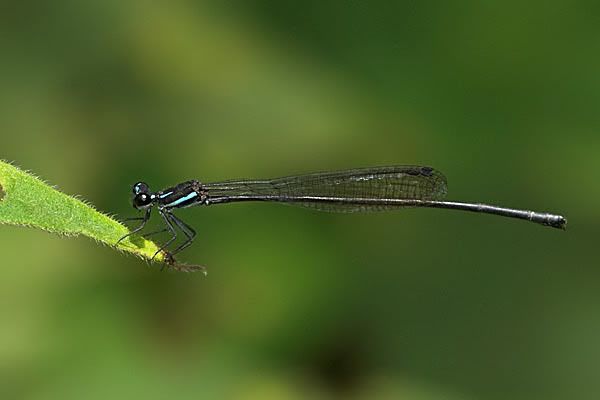 The last section of the abdomen started to bend downwards.
The last section of the abdomen started to bend downwards.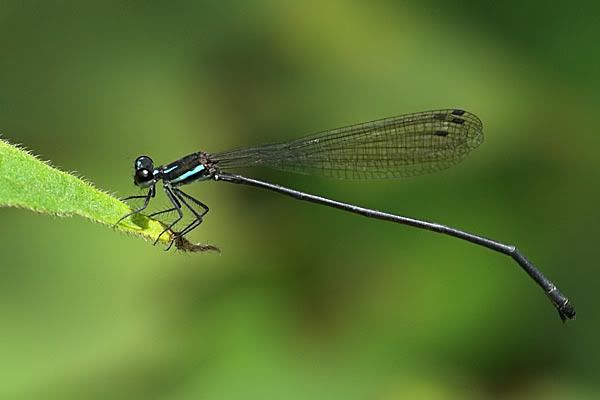 Next the second or the third last section began to follow suit. This motion of bending the abdomen was rather gradual and not so "violent" .
Next the second or the third last section began to follow suit. This motion of bending the abdomen was rather gradual and not so "violent" . 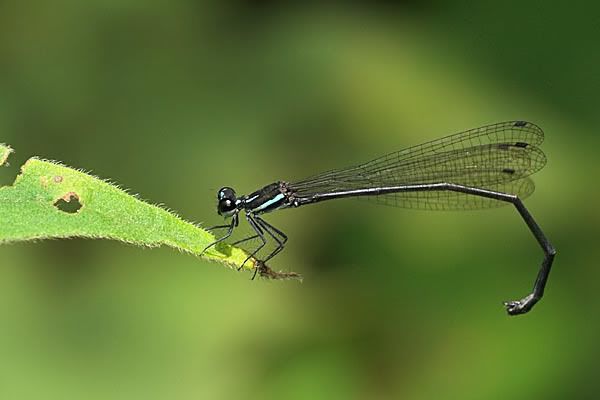 One more section of the abdomen was seen curling downwards.
One more section of the abdomen was seen curling downwards.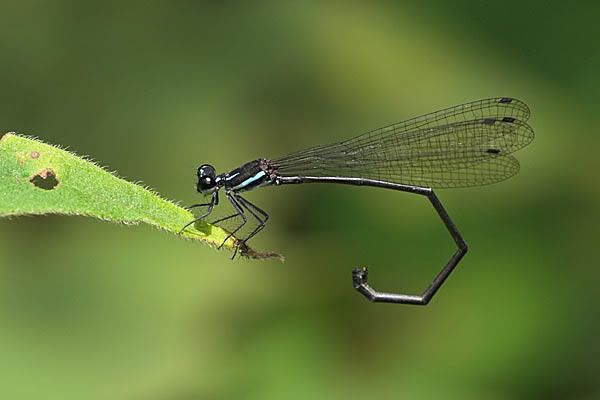 Now, it almost completed the bending motion. What a nice shape it formed. Until today, I have not seen this kind of motion again.
Now, it almost completed the bending motion. What a nice shape it formed. Until today, I have not seen this kind of motion again. 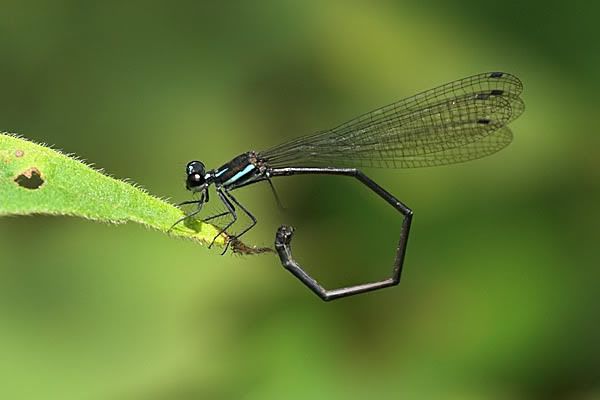 What is the purpose of all these ? I am still looking for an answer.
What is the purpose of all these ? I am still looking for an answer.  A few wasps or perhaps hornets were foraging on the leaf surface on the same shrub as these
A few wasps or perhaps hornets were foraging on the leaf surface on the same shrub as these  And this Yellow-vented hornet (
And this Yellow-vented hornet ( We only have four butterfly species belonging to the genus
We only have four butterfly species belonging to the genus 



 This
This  Here is another shot that shows us a glimpse of a bright orange patch on the
Here is another shot that shows us a glimpse of a bright orange patch on the  The Knight (
The Knight ( My first shot of this relatively rare Colonel (
My first shot of this relatively rare Colonel (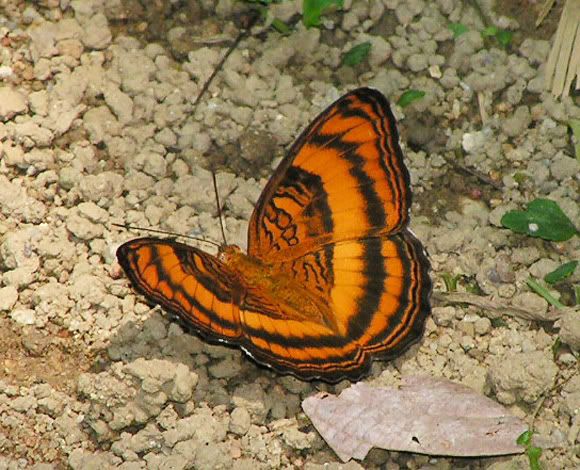 This was my second encounter of this species here after four years. As usual, a very skittish guy, it preferred to stay high up most of the time.
This was my second encounter of this species here after four years. As usual, a very skittish guy, it preferred to stay high up most of the time. It is rather hard to spot a Dark Blue Jungle Glory (
It is rather hard to spot a Dark Blue Jungle Glory ( I have begun to notice and shoot more species of moth in the wild since I started this blog almost a year ago. I usually have no clue of what I shot, like this one, a small moth resting underneath a leaf. But I hope one day someone will drop by here and name the species.
I have begun to notice and shoot more species of moth in the wild since I started this blog almost a year ago. I usually have no clue of what I shot, like this one, a small moth resting underneath a leaf. But I hope one day someone will drop by here and name the species. Another Yellow-vented-hornet (
Another Yellow-vented-hornet ( Wow, at one moment as if it was staring at me.
Wow, at one moment as if it was staring at me. This fungus grew on a fallen tree trunk and I think the grasshopper was risking its life resting at that open and prominent position.
This fungus grew on a fallen tree trunk and I think the grasshopper was risking its life resting at that open and prominent position.  This was my best attempt at shooting an in-flight male
This was my best attempt at shooting an in-flight male  I consider this a rather fruitful outing. Let see what I will find during my next visit to
I consider this a rather fruitful outing. Let see what I will find during my next visit to